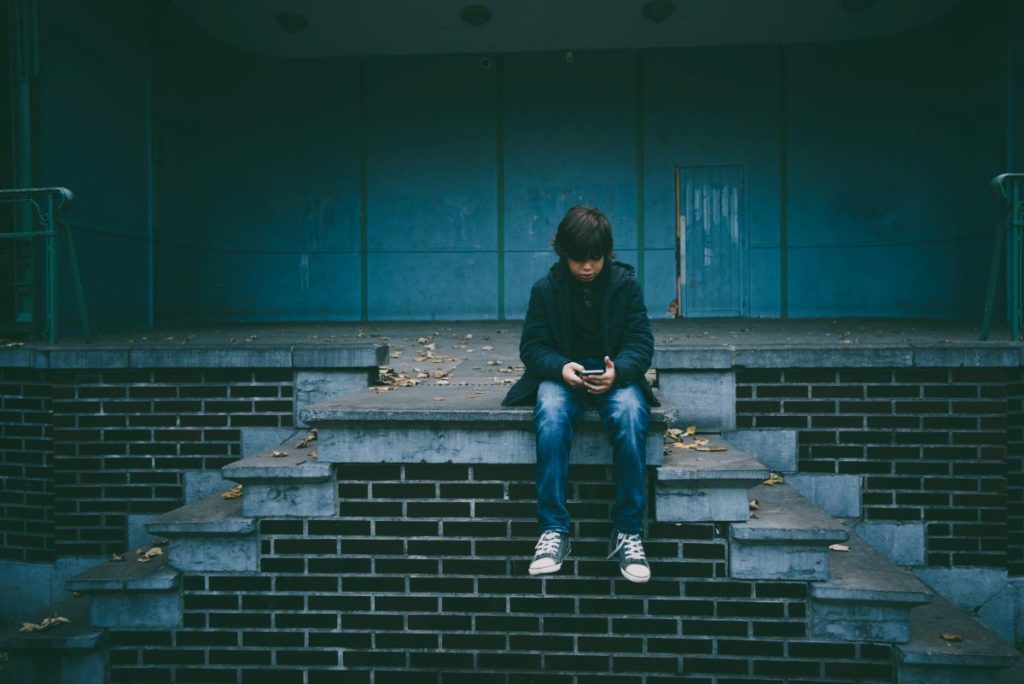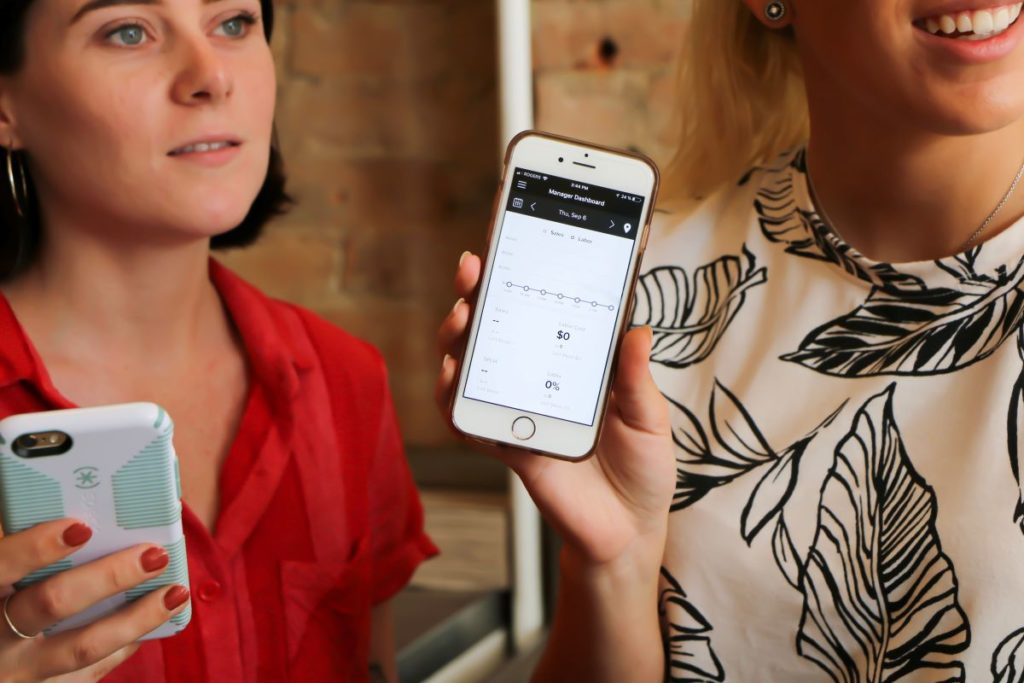
Young people have unprecedented access to technology. How often do we hear about how ubiquitous the use of technology is in the young? I am not just an academic, I am also a mother of two children and I live and breathe this reality of managing technology in my children’s lives. My mother often comments about how glad she is that she didn’t have to parent in this age of technology. As a clinician and a researcher who works with young people, I also hear about the impact of social media from young people themselves.
In New Zealand, recent statistics show that 72% of 9-17 year-olds use a smartphone, with this figure rising to 93% for 15-17 year olds (Pacheco & Melhuish, 2019). Four years ago, US data suggested that the average age for young people to have their first smart phone was 10.3 years. This highlights how easy it is for young people to connect to the Internet and all that it offers, and of course there are other devices to consider including television, gaming consoles, computers and tablets.
In the current COVID-19 context, suddenly the use of technology has become essential for education and mental health care provision to young people, as families and their young people are confined to their homes. The potential benefits are being harnessed but we also need to minimise the risks involved with our children and young people at home, and online!
The aim of a recent report from the Royal College of Psychiatrists (Dubicka and Theodosiou, 2020) about the use of technology by children and young people, was to summarise the evidence to date about the potential benefits and harms of technology use in this age group.

This RCPsych report aims to highlight how to maximise the benefits and minimise the risks of technology use by children and young people.
Methods
There is very little detail about the methods; the authors describe the report as a scoping review and are upfront in highlighting that it is not a systematic review. Therefore, the usual assessment of quality and other aspects of systematic review methodology you might expect aren’t present; however, they have included recent systematic reviews and key studies. There are 284 references in all and the authors have critically reviewed these; pointing out gaps and limitations in methodology and what future research is needed.
The report has been prepared by an excellent team of well-respected and knowledgeable experts and is well written and easy to digest.
Clear recommendations have been produced for various audiences, including young people, parents, clinicians, education providers, government and technology companies that distil all of the information into something that can be easily implemented.
Results
The College report outlines the impacts of technology across a range of domains, highlighting the opportunities and potential benefits where these have been demonstrated, but also being clear about where the research has shown potential negative impacts. This includes impacts on early development, where opportunities to master communication, motor and interpersonal skills are lost, and on education where there are concerns about the impact on attention and academic performance. The association with physical outcomes, including obesity and poor sleep are described, and impacts on wellbeing are explored, with the links between sleep and wellbeing highlighted. The potential negative impact on wellbeing of social comparison and how this impacts on a young person’s sense of self-worth and body imaged are described, as well as the potential link between cyberbullying and eating disorders.
In terms of mental health, the relationship between technology use and depression is described in reference to the mediating effects of cyberbullying, poor sleep and low levels of physical activity. The relationship between depression and technology use (and in particular social media) is complex, and is described as potentially bidirectional. The type of technology, and the type of interaction on social media is important (is it positive interaction or negative interaction; is social comparison a factor?). Background factors, personality, and other underlying vulnerabilities are also important to consider. Internet addiction and gaming disorder are highlighted, with the need for clinicians to be ensuring their assessments include asking about how young people are using technology, their digital world and whether or not these issues are present.
Self-harm and suicide are of particular concern in regards to technology, with clear associations between more recent television portrayals and risk of suicide showing the potential impact of contagion. Cyberbullying is again of concern, as is access to content contained on particular sites. The opportunity for harnessing the potential positives, such as increased help-seeking opportunities and social support and connectedness are highlighted, with recommendations about how social media and video/image sharing could be used in therapy in the context that social media is increasingly used to communicate distress. There are some excellent recommendations about safeguards that could be put in place, such as flagging harmful content, offering free direct hotlines for those at risk, and these highlight the potential for proactive detection and reaching out (there are examples of big initiatives like those implemented by Facebook, as well as local ‘homegrown’ versions).

The relationship between depression and technology use (and in particular social media) is complex, and is described as potentially bidirectional
Conclusions
The College report concludes that “there are many positive benefits for CYP (children and young people) from the use of the internet”, but that there are a range of potential adverse impacts and that “some CYP may be vulnerable to compulsive use and potential harms”.
Implementation will now be key. From a parental perspective, support is needed to make sure there are boundaries at home that are enforced when parents may not have the resources (emotional, time, monetary, equipment) to do this, or education about how to ensure they keep the lines of communication open with their children and young people. And parents need backup, including education providers making sure young people receive education on the potential harms of the internet, that clinicians know to include assessment of a young person’s digital world, as well as the need for regulation so that young people are not pushed to the online world and are more protected from harmful content.
It strikes me that as researchers and mental health clinicians, we need to work with people in the technology industry and capitalise what they know about persuasive design so that we can influence young people to use the many digital tools that now exist to support mental health and wellbeing. The report highlights that digital companies have used these approaches, which are particularly powerful in young people who are vulnerable because they are less able to self-regulate. Gaming and social media companies must be held to account, there should be regulation, and we should learn from them as we seek to utilise technology to provide positive experiences and interventions for young people (e.g. Warren et al., 2020).

This RCPsych report concludes that whilst there are many positives for children and young people using the internet, there are also a range of potential adverse outcomes.
Strengths and limitations
This is a thorough review that has clearly outlined the limitations of the evidence base to date, for example highlighting methodology that means causality cannot be established. The report points to the need for longitudinal studies, studies that include greater precision with regard to the type of technology being used, the content and context, and the nature of interactions taking place, studies with particular subpopulations such as those with Autistic Spectrum Disorder, studies that include objective rather than subjective self-report measures and studies that explore the views of children and young people.

This RCPsych report on technology use and the mental health of children and young people, provides clear recommendations to support the implementation of take-home messages.
Implications for practice
While more research is needed to help us understand what and when screen time might be beneficial and when there might be potential harms, this report provides recommendations that are helpful for a range of stakeholders, including young people themselves who have a role in helping us understand these issues and how to best educate and support them.
Some recommendations include: being informed, having clear and enforced boundaries (which are very restrictive for young children), encouraging dialogue and engaging young people to think about their digital world, the impact it might be having and implementing agreed limits and boundaries, including having a balance with other activities. The focus on physical activity and sleep are important and consistent with evidence about the need for each (Alonza, et al., 2019; Bailey. et al., 2018; Werner-Seidler et al., 2019), with screen free bedrooms highlighted as important.
We should remember that these limits and boundaries should apply to our technology use as adults as well!

Adults, too, should consider implementing some of the limits and boundaries suggested for children and young people regarding their technology use.
Statement of interests
Sarah Hetrick is funded by the Auckland Medication Research Foundation to create and test an app to support young people who are engaging in behaviours like self-harm and substance use. Sarah Hetrick is also funded by the Ministry of Business, Innovation and Employment as part of A Better Start E Tipu E Rea National Science Challenge, and the work she co-leads with her colleague Tania Cargo is about creating a platform for digital tools to support mental health and wellbeing in young people. Sarah is the joint co-ordinating editor of the Cochrane Common Mental Disorders Group, and manages the Children and Young People Satellite of this group. She is on the World Federation of Societies of Biological Psychiatry Task Force on Child and Youth Psychiatry with Bernadka Dubicka. Sarah Hetrick’s wider team has a collaborative relationship with Chris Hollis and are co-authors on a manuscript that will soon be submitted on digital interventions for young people.
Links
Primary paper
Dubicka B, Theodosiou L. (2020) Technology use and the mental health of children and young people. Royal College of Psychiatrists, College Report 225, January 2020.
Other references
Alonzo R, Hussain J, Anderson KK, Stranges S. Interplay between social media use, sleep quality and mental health outcomes in youth: a systematic review. Sleep Medicine 2019 64: S365
Pacheco D, Melhuish N. (2019). Exploring New Zealand children’s technology access, use, skills and opportunities. Evidence from Ngā taiohi matihiko o Aotearoa – New Zealand Kids Online.
Werner-Seidler A, Wong Q, Johnston L, et al. Pilot evaluation of the Sleep Ninja: a smartphone application for adolescent insomnia symptoms. BMJ Open 2019;9:e026502. doi:10.1136/ bmjopen-2018-026502
Warren J., Hopkins S, Leung A. et al. 2020. Building a Digital Platform for Behavioural Intervention Technology Research and Deployment. Health Behavior Change Support Systems; pg. 3378-3386.
Photo credits
- Photo by Prateek Katyal on Unsplash
- Photo by Gaelle Marcel on Unsplash
- Photo by Federico Beccari on Unsplash
- Photo by Ludovic Toinel on Unsplash
- Photo by Nick Fewings on Unsplash
- Photo by 7shifts on Unsplash
